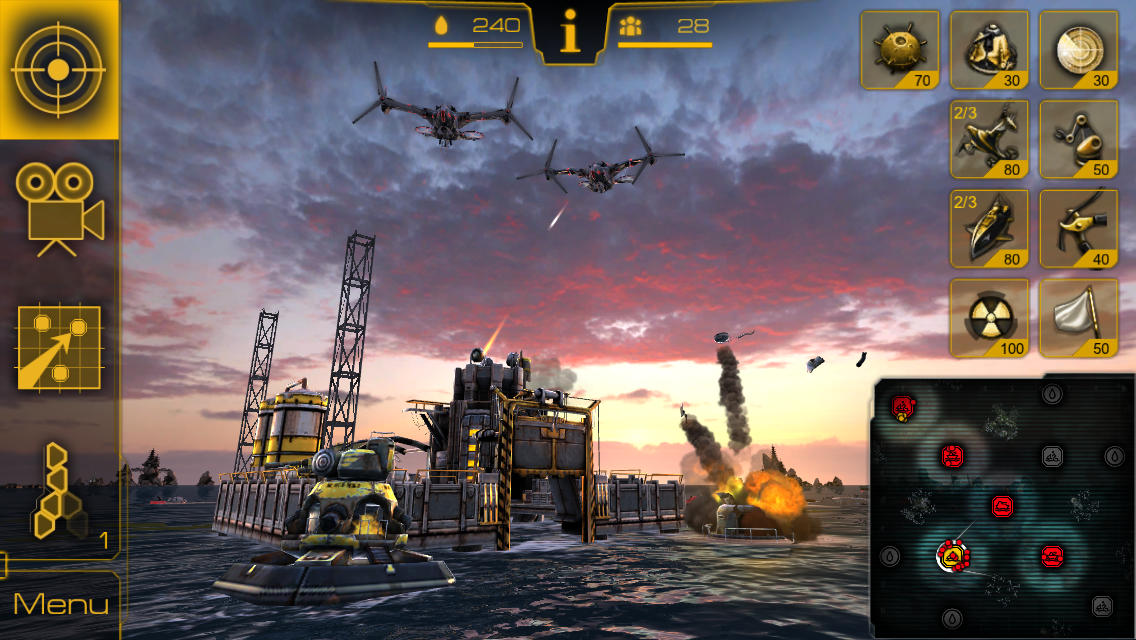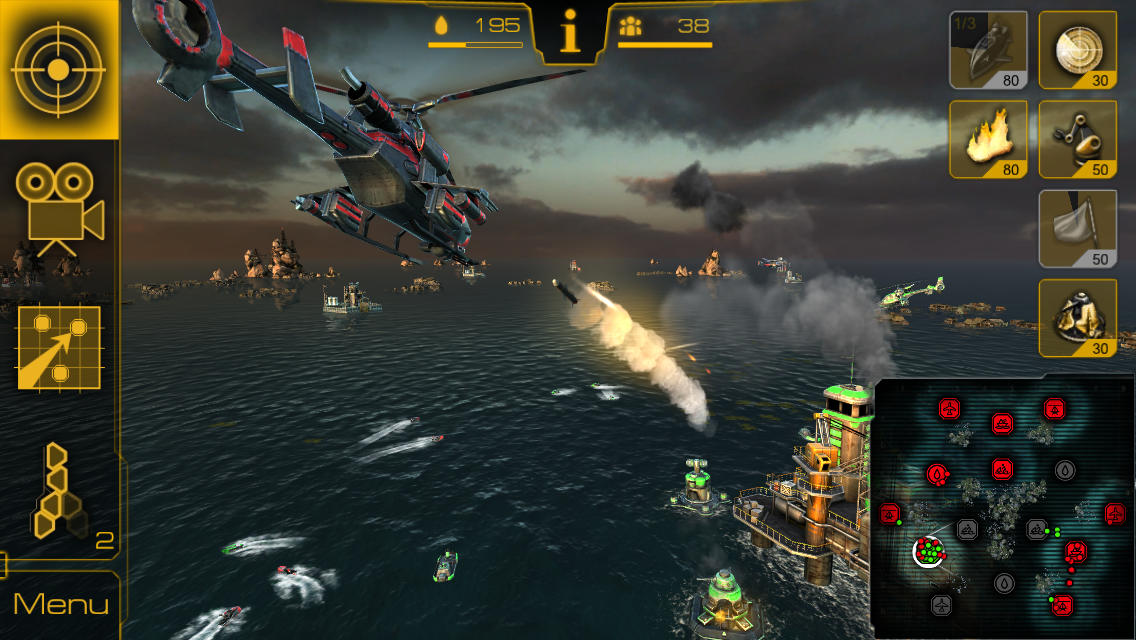![]() Whenever I play a games with a post-apocalyptic ocean setting, I’m always reminded of that horrible Waterworld movie. Sure, most games will undoubtedly do the bare minimum to create an experience marginally better than that flick, but it’s never a good starting position. Oil Rush: 3D Naval Strategy ($1.99) certainly does what it can to offer a decent superficial experience. Unfortunately, it doesn’t do nearly enough in other facets and ends up being simply satisfactory.
Whenever I play a games with a post-apocalyptic ocean setting, I’m always reminded of that horrible Waterworld movie. Sure, most games will undoubtedly do the bare minimum to create an experience marginally better than that flick, but it’s never a good starting position. Oil Rush: 3D Naval Strategy ($1.99) certainly does what it can to offer a decent superficial experience. Unfortunately, it doesn’t do nearly enough in other facets and ends up being simply satisfactory.
If I had to describe Oil Rush succinctly, I’d say it’s Galcon ($1.99) with a 3D visual engine and a little bit of extra strategy thrown in the mix. As the game takes in a world covered in ocean, Oil Rush focuses on the capture and defense of oil refineries and platform barracks. The barracks slowly churn out new units while the refineries produce oil, the currency used to purchase and upgrade defense towers and unleash super powers. Sure, there’s a story tying the whole thing together, but I found it lackluster at best.

While missions can have a variety of objectives, they all boil down to strategically managing your units by moving them from platform to platform. You have no direct control over units; instead you draw lines from platform to platform in order to get your ships to move. The premise is easy to understand and, if you played Galcon, it’ll instantly be familiar. Oil Rush also implements it well, with the game offering a decent amount of challenge.
Oil Rush adds to this simple premise with tower defense and special powers. All platform barracks can be upgraded with a variety of different towers that are strong against different units. While towers by themselves won’t hold off a strong attack for long, they are still useful as a last line of defense when planning a massive attack. The powers, meanwhile, are researched during missions and range from passive stat increases for ships to active powers that can buff allies and weaken enemies. It may not seem so at the onset, but these powers become essential in later missions and need to be utilized for success. I appreciate the fact that this added layer isn’t superfluous and requires players to actually use it.
Unfortunately, Oil Rush’s core gameplay can’t help the fact that it suffers from a few significant issues. For starters, the game plays out incredibly slow. While other, similar games are known for fast-paced quick-thinking gameplay, Oil Rush seems to drag on in all facets. My complaint mainly centers on the actual moving of units between platforms, although the actual building of towers and units could be faster as well (a special power can actually improve this but only on one platform at a time). I don’t know if this was a decision to try and provide players with more time to plan attacks, but I don’t think its necessary.

Also, while Oil Rush is certainly a treat to look at, I think in some regards its emphasis on visuals hurts the game. For example, it’s hard to see if you’re actually winning a naval battle and if you’re taking over an enemy platform. The ‘Cinematic’ view, which is supposed to offer a better glimpse of the action, is pretty useless. In fact, I’d argue the best way to play Oil Rush is to focus on the command view (which happens to look most like Galcon) and only switch out to build towers and use powers. I also thought the tutorials were lacking, with the in-game instructions not doing enough to really teach some of the deeper elements.
As I’ve mentioned several times, Oil Rush is a gorgeous game. Combine this with established gameplay elements and there should have been a lot of love. However, it just felt like the various aspects of Oil Rush just didn’t mesh well together. The quick and simple controls don’t mesh with the slow gameplay while visuals don’t do enough to provide adequate feedback. It’s an awkward position to be in for a game and makes for a title that I wouldn’t necessarily recommend in its current form.